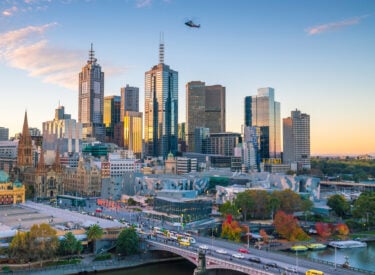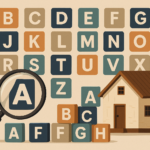
Key takeaways
Buyers assume their mortgage repayments go toward building equity.
In reality, up to the first 15 years of repayments on a typical new build mostly cover government-imposed taxes and charges—not the home itself.
According to HIA’s Tim Reardon, governments collect more revenue from a home sale than the builder, developer, land seller, and bank combined.
These taxes aren’t just upfront; when financed through a mortgage, buyers pay interest on them for decades.
Imagine this: you finally scrape together a deposit, brave the high interest rates, and secure a mortgage on your dream home.
You assume the next 30 years will be about gradually owning more of your home.
But what if I told you the first 15 years of your mortgage repayments essentially go to covering taxes and government-imposed costs, not to paying off the value of the house itself?
That’s not alarmist rhetoric—it’s the stark reality facing today’s buyers, especially those purchasing newly built homes.
According to new analysis from the Housing Industry Association (HIA), property taxes have quietly become one of the biggest contributors to housing unaffordability in Australia.

Source: HIA
You’re paying the Government first
HIA chief economist Tim Reardon puts it plainly:
“The government takes more from the sale of a home than the builder, the developer, the land seller and the banks—combined.”
Let that sink in.
You’d think the builder or developer would walk away with the biggest slice of the pie when you buy a property.
But no—it’s the government.
Through a suite of hidden and not-so-hidden taxes, levies, and charges, governments at all levels have effectively embedded $270,000 worth of taxes and regulatory costs into the price of a typical new house and land package in Sydney, and around $200,000 in Melbourne.
And if you’re financing your home with a mortgage—and let’s face it, most people are—that’s not just a lump-sum cost.
You're also paying interest on those taxes, stretching the real cost even further over time.

Source: HIA
Apartments are not spared from taxes
The HIA also looked at the taxes, fees and charges associated with new apartments, and the findings were equally dire.
The report found that up to $346,000, or 38 per cent, of the cost of a new apartment in Sydney is government taxes, regulatory costs and charges.
The value of the tax and regulatory cost component of a new apartment has increased by $104,000 or 68 per cent in Brisbane compared to the 2019 report.
The HIA believes that a key reason why apartment affordability and apartment approval numbers are at decade lows is due to these regulatory imposts.

Source: HIA
How the “Mortgage Maths” works
Reardon’s analysis reveals that these taxes translate to approximately 50% of a buyer’s mortgage repayments for the first 15 years.
Not your kitchen, not your backyard, not your growing equity—just taxes.
For a couple earning average incomes and buying a typical new home, this burden is effectively two full incomes for a decade and a half going straight into the tax basket.
To be clear, we’re not just talking about obvious taxes like stamp duty. These costs include:
Developer levies and infrastructure charges:
- GST on new home construction
- Land taxes (passed on in pricing)
- Planning delays and regulatory red tape
- Environmental and open space levies
- Local council fees
All of these costs compound, and they’re built into the end price.
Developers don’t absorb them—they pass them on, and buyers pay the premium.
What does this mean for buyers
Let’s think through the implications.
Many first home buyers mistakenly assume they’re struggling to enter the market purely because of market forces—low supply, high demand, investor activity, or even foreign buyers.
While those are real pressures, taxation is the hidden hand steadily inflating the base price of new housing.
Buyers aren’t just competing against each other. They’re also carrying the burden of a tax-heavy development system.
It’s like being taxed for success before you’ve even started building wealth.
And for investors?
It means lower yields and slower capital growth on new builds, because tenants can’t afford to pay inflated rents that correspond to inflated build prices, and price growth is constrained by the overall affordability ceiling.
Governments are addicted to the revenue
One reason this situation has been allowed to fester is that governments have become addicted to property-related revenue.
In fact, according to the HIA, housing-related taxes deliver more revenue to the states than pokie machines, mining royalties, and payroll tax combined.
This revenue dependence creates a perverse incentive.
Rather than reform the tax system to reduce burdens and boost supply, governments tinker at the edges, offering limited grants or adjusting eligibility thresholds, while leaving the core problem untouched.
It’s politically easier to promise new homebuyer schemes than it is to cut off the property tax gravy train.
A better way forward?
There’s growing consensus—across industry, economics, and even parts of government—that if we’re serious about improving housing affordability, we need to rethink how we tax and regulate property development.
Reducing the tax burden on new construction would lower prices, encourage more supply, and ease mortgage stress.
In turn, this would benefit not just buyers but the broader economy, because a less stressed, more mobile, and more prosperous population is good for everyone.
As Tim Reardon points out:
“If the government was sincere in its efforts to make homes more affordable, the most effective step would be to reduce the taxes and charges on new housing.”
Until then, Australians will keep paying off taxes for the first decade and a half of home ownership, and they’ll wonder why housing still feels out of reach.
Final thoughts
This latest analysis confirms something many of us in the industry have known for years but few talk about: the housing affordability crisis isn’t just about supply and demand—it’s also about tax policy.
And if we want to build a better, fairer housing future, we can’t just build more—we need to build smarter.
That means unpicking the layers of tax and regulation that have quietly added hundreds of thousands of dollars to the cost of a home.
So next time someone asks why housing is so expensive, you can say with confidence: it’s not just the market—it’s the tax man.














